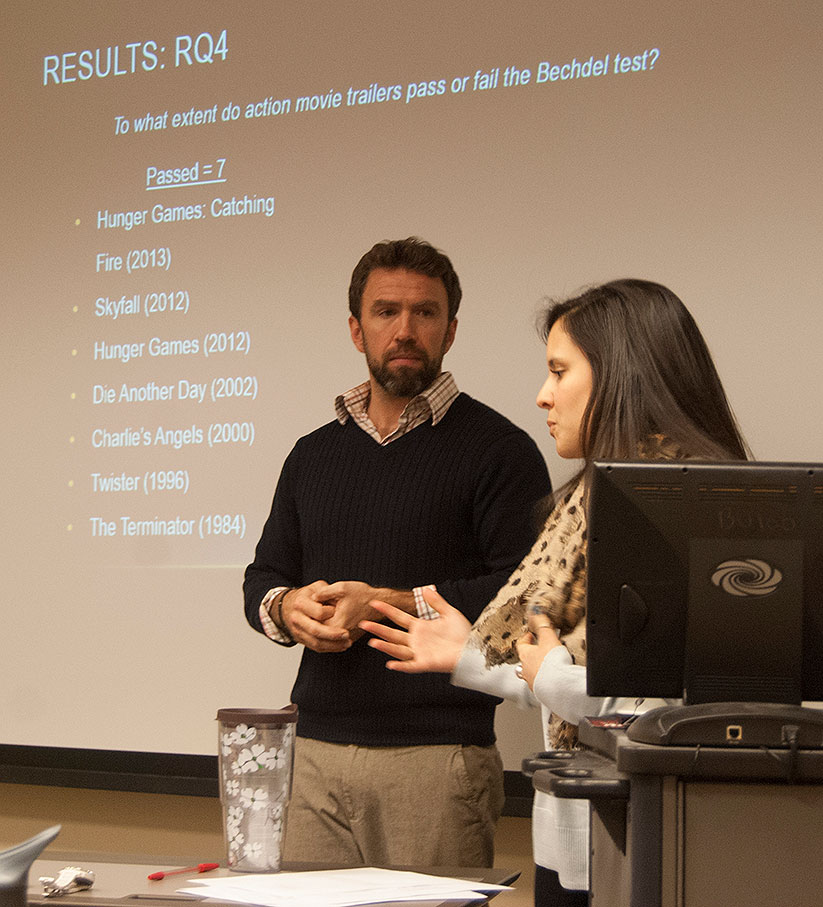Brown Bag speakers address women in action movie trailers

In the world of big-budget action movies, new research shows that women are stepping out of the background and playing more prominent roles.
Doctoral students Mona Malacane and Sean Connolly presented their work, “Women’s Role in Action Movie Trailers: A Content Analysis Examining Sexual and Agentic Portrayals, 1982-2013,” during a Brown Bag Seminar Friday in RTV226.
Their research found that women have more of a presence and are now playing a larger role in action movies. The study looked at 155 action movie trailers, which were culled from the top grossing films of the genre for each year, according to Malacane. The research looked at how women were portrayed in three areas: sexualization, aggression and agency, she said, and also tried to measure if women in these films interacted with each other to discuss a topic besides men.
Since the dawn of the big-budget action movie era of the 1980s, the role of women in the genre has changed, Malacane said. Women have gone from background characters to starring in $100 million action franchises, she said.
For example, in the trailer for 48 Hours, women are background characters who appear for a brief period and go away, Connolly said. In the 1990s, that started to change, he said, and in a movie like Passenger 57, the women characters have names and play a role in the plot.
Women’s roles in action movies shifted significantly in the late ‘90s and early 2000s with films like Charlie’s Angels, Tomb Raider and The Matrix, Connolly said. The women in those films were main characters but still highly sexualized.
Now, films like The Hunger Games have a number of women characters who play a significant role, Connolly said.
Malacane said their work fits into a greater cultural conversation of how women are portrayed in the mass media.
“Mona and Sean’s research on the portrayal of women in action movie trailers is particularly important because of its emphasis on agency,” said professor Paul Wright, who attended the presentation. “Their project goes beyond the straightforward documentation of women’s sexualization and involvement in scenes depicting aggression, and asks whether women are shown charting their own destiny and experience. As women often lack agency in movies, this is an important point of analysis.”

